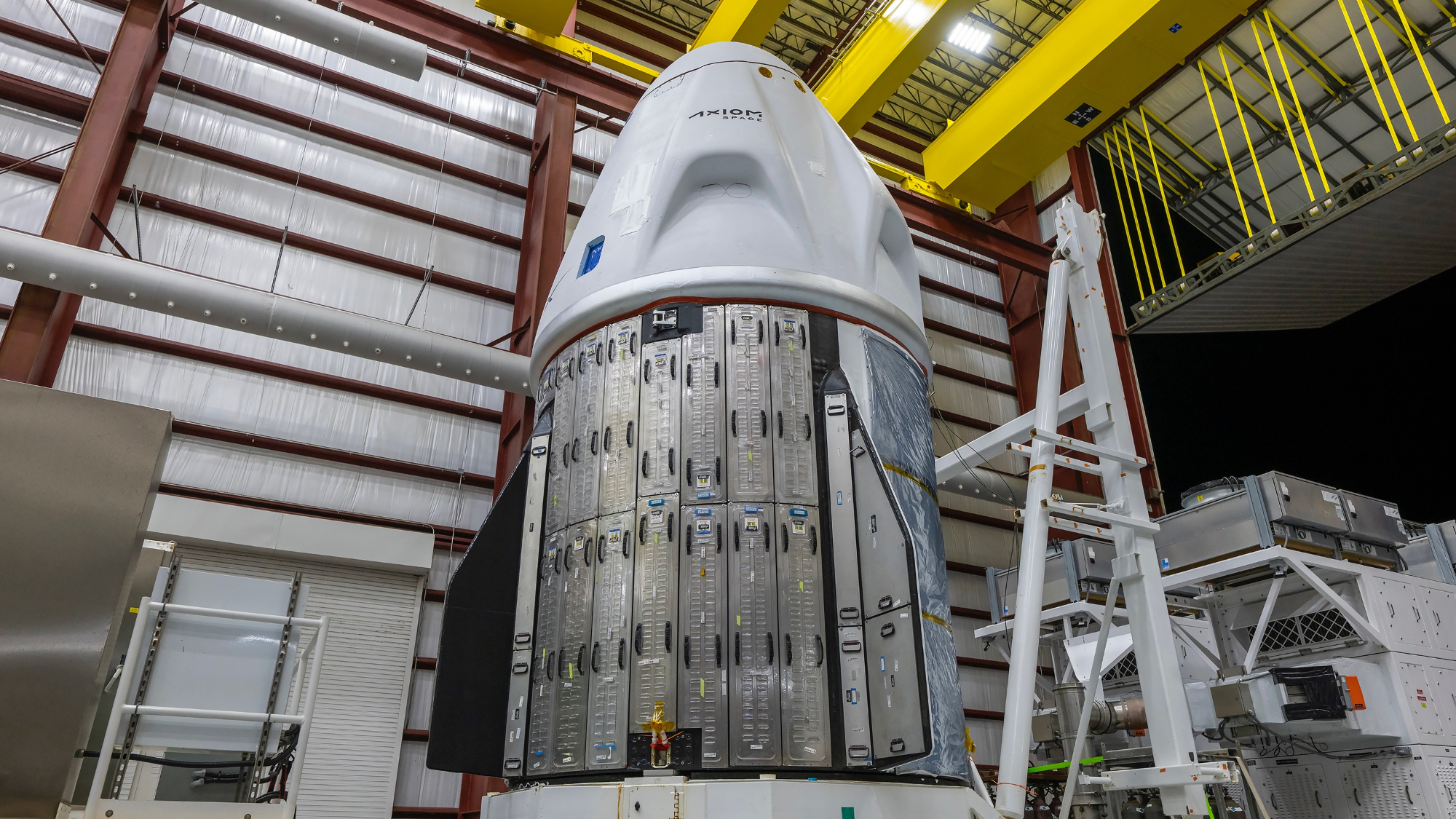'Ask a Spaceman' Tells Why Milky Way's on a Collision Course
You may feel like you're sitting still while you're reading this sentence, but the Earth — heck, the entire Milky Way — is moving incredibly quickly. In fact, the Milky Way is on a collision course with an even bigger galaxy, known as Andromeda. Should we be worried? Astrophysicist and Space.com columnist Paul Sutter says "no" in the latest installment of "Ask a Spaceman."
In Episode 7 of the Facebook Watch series, Sutter explains that a galaxy collision is a long process — and a complicated one, to boot. "When galaxies collide, I don't want you to have it in your head that it's a car crash — a big bang. A 'Big Bang' is something else, anyway," Sutter quipped, referring to the event that formed our universe about 13.8 billion years ago. (He also covered the Big Bang in Episode 2.) [Milky Way Galaxy's Head-On Crash with Andromeda: Artist Images]
The Milky Way and Andromeda are moving closer to each other at a speed of hundreds of miles every second, he explained. In about 5 billion years, the two galaxies will merge, but that does not mean that the individual stars are going to smash together. Stars are too tiny — compared to the volume of a galaxy — to have a high risk of hitting each other.
Instead, we're going to get some other weird effects, Sutter said. The Milky Way and Andromeda will first swing past each other, then swing back again and interact some more. Eventually, as their mutual gravities intertwine, they will become a much larger galaxy that is unrecognizable from its two predecessors.
That's because galaxies are made up of a lot of loose gas. The shock wave of the galactic collision will compress that gas. In some areas, at first, the gas will compress so much that it will produce a burst of new stars. The resulting merged galaxy will shine extremely brightly becoming the brightest thing in the neighborhood, Sutter explained.
But the spiral-arm structures in the Milky Way and the spiral arms in Andromeda will end up as "tangled wrecks," he added. The gravitational interactions from the collision and merger will tear the arms apart, using up all the gas. "It's going to end in tragedy," Sutter said. "You run out of stuff to make new stars."
Over hundreds of millions of years, the new galaxy will evolve into an elliptical galaxy. Sutter said these sorts of galaxies are dim, red and "pretty dang ugly."
Get the Space.com Newsletter
Breaking space news, the latest updates on rocket launches, skywatching events and more!
How do we know all this? By studying other galaxies all across the sky, scientists have figured out the different stages of collision — before, during and after — and they can make predictions about the Milky Way's future. After the merger completes, the next pressing question will be deciding what to name the merged galaxy, Sutter joked. He threw out the suggestions "Milkomeda" and "Andromeda Way," but suggested that there might be better options.
"Ask a Spaceman" episodes are released weekly on Wednesdays at 12 p.m. EDT (1600 GMT), so "like" the "Ask a Spaceman" Facebook page or check back later to see more. Sutter also responds to reader questions in every episode. Check the page to learn more about past topics the show covered, such as the Big Bang and Pluto.
Sutter is a cosmologist at The Ohio State University and chief scientist at Columbus, Ohio's Center of Science and Industry. He has a long-running podcast, also called "Ask a Spaceman". You can catch all past episodes of his podcast here.
Follow us @Spacedotcom, Facebook and Google+. Original article on Space.com.
Join our Space Forums to keep talking space on the latest missions, night sky and more! And if you have a news tip, correction or comment, let us know at: community@space.com.

Elizabeth Howell (she/her), Ph.D., was a staff writer in the spaceflight channel between 2022 and 2024 specializing in Canadian space news. She was contributing writer for Space.com for 10 years from 2012 to 2024. Elizabeth's reporting includes multiple exclusives with the White House, leading world coverage about a lost-and-found space tomato on the International Space Station, witnessing five human spaceflight launches on two continents, flying parabolic, working inside a spacesuit, and participating in a simulated Mars mission. Her latest book, "Why Am I Taller?" (ECW Press, 2022) is co-written with astronaut Dave Williams.
